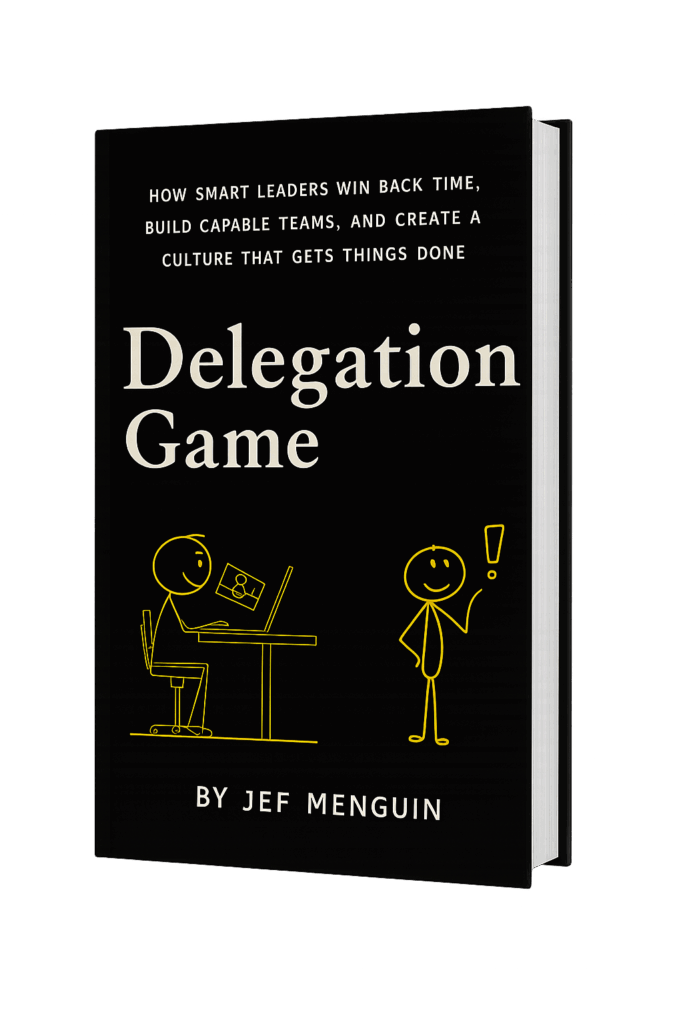Have you ever thought about what makes some teams bounce back from challenges, while others struggle?
It’s all about resilience! Spotting the signs of a strong, bounce-back team can be a game-changer.
For all our hard-working Filipino managers and supervisors out there, understanding these signs can help you shape a team that’s ready for anything. Stick around, and we’ll dive deep into what these signs are and how you can bring them to life in your own team.
The Story of a Non-resilient Team
In the heart of Cebu, there was a small startup called “LakbayTech.” They had a passionate team and a promising product, but there was something missing.
Every time a problem popped up, the team seemed to get stuck. Instead of finding solutions together, they often ended up pointing fingers at each other. When a client gave negative feedback, instead of taking it as a chance to improve, they took it to heart and let it dampen their spirits.
Over time, their initial energy began to fade. Deadlines were missed, team meetings turned tense, and what was once a lively office became filled with silence and long sighs. Many members started coming in late, some thought of quitting, and the enthusiasm they once had was now a distant memory.
The lack of resilience was evident. Instead of facing challenges head-on and growing from them, the team let these hurdles pull them down. Their performance dipped, and so did their motivation. Potential clients noticed the drop in energy and began to look elsewhere.
The story of LakbayTech is a powerful reminder. It shows that without resilience, even the brightest ideas and the most passionate teams can lose their way.

Defining a Resilient Team
Imagine a bamboo tree during a storm. While other trees might snap or get uprooted, the bamboo bends with the wind, only to stand tall once the storm passes. Similarly, in the bustling world of teamwork, challenges and unexpected twists are like those storms.
A resilient team is like that bamboo tree – flexible, adaptable, and always bouncing back.
In simpler terms, when we talk about a resilient team, we’re talking about a group that doesn’t easily give up. They face challenges, learn from mistakes, and move forward stronger than before. Instead of seeing setbacks as failures, they view them as learning opportunities.
They support one another, adapt to changes, and always find a way to get the job done, no matter the odds.
By the end of this guide, you won’t just know what makes a team resilient. You’ll also have handy tips and tricks up your sleeve to help your team become a shining example of resilience.
1. Sticking Together Through Thick and Thin
Sticking together through thick and thin means that team members have each other’s backs, no matter how tough the situation gets. They don’t abandon ship during rough times but rally together and face challenges head-on.
When team members trust each other and work together, they become an unstoppable force. It’s like being in a boat during a storm; if everyone rows together, they’ll navigate the waves much more effectively.
Imagine a team racing against a deadline. The pressure is on, and one member encounters a tech glitch that delays his part. Instead of saying, “That’s your problem!”, his teammate steps in and says, “Bro, let’s fix this together. We’ll meet that deadline as a team!” This is what we Filipinos call “bayanihan” at work.
Stick Together. Have regular team-building activities or workshops. It doesn’t have to be fancy; even a simple team lunch or group exercise can remind everyone that they’re on this journey together.
2. Learning from Mistakes
Learning from mistakes means that when things don’t go as planned, the team doesn’t just shrug and move on. Instead, they take a moment, figure out what went wrong, and use that knowledge for next time.
Mistakes are like life’s way of teaching us. If we don’t learn, we’ll likely make the same errors again. But when a team uses mistakes as stepping stones, they grow stronger and smarter.
Imagine this: after a presentation to a client, the team gets feedback that their proposal lacked clarity. Instead of brushing it off, one member says, “Okay, where did we miss the mark? Let’s review and do better next time.” Another chimes in, “I think our slides were too crowded. Next time, let’s simplify and practice our pitch more.” This proactive attitude is what Filipinos might fondly term as having a “diskarte.”
Learn from Mistakes. After significant tasks or projects, have a “reflection session” where the team discusses what went well and what can be improved. Making it a habit ensures that everyone is always on the lookout for growth.
3. Celebrating Small Wins
Celebrating small wins is about recognizing and appreciating even the little achievements within the team. Instead of just waiting for big successes, they find joy in the journey and every step they take together.
Continuous appreciation motivates and uplifts everyone. It’s like giving water to plants. They need regular hydration, not just one big pour every once in a while.
Now, picture this: After weeks of brainstorming, the team finally agrees on a project direction that aligns with their goals. As they conclude the meeting, one member excitedly says, “Great job, everyone! We’re one step closer!” Another one adds, “True! This might be a small step, but it’s a step forward nonetheless. Tara, let’s have some merienda to celebrate!”
It’s this kind of spirit that embodies the Filipino term “walang iwanan” – never leaving anyone behind.
Celebrate! Set up a “Kudos Board” in the office where team members can pin notes of appreciation or milestones. It serves as a constant reminder of the team’s progress and camaraderie.
4. Flexibility in the Face of Change
Flexibility means that when unexpected changes come, the team doesn’t freeze or resist. They adapt, adjust, and find new ways to move forward without losing their spirit.
Change is like the wind. You can’t stop it, but you can adjust your sails. Teams that remain rigid often find themselves struggling, while those that are flexible navigate smoothly.
Imagine this scene: The team has been working on a project using a particular software. Suddenly, they’re informed that they’ll have to switch to a different platform. Instead of groaning in despair, one member says, “It’s a challenge, but maybe this new software offers some cool features we can benefit from.” Another one suggests, “Let’s schedule a quick training session for everyone to get up to speed.”
Their adaptability reflects the Filipino trait of being “matiyaga” – patient and persevering.
Boost Flexibility. Organize occasional team challenges or simulations that require adapting to new situations. This not only sharpens skills but also fosters a culture of readiness and adaptability.
5. Everyone’s Voice Matters
This sign is about valuing each member’s opinion and ensuring everyone feels heard. In a resilient team, it’s not just the loudest voice that gets attention; everyone, from the newbie to the veteran, has a seat at the table.
A team is like a puzzle. Each piece, no matter how big or small, is essential to complete the picture. When everyone contributes, the outcome is richer and more diverse.
Picture this scenario: During a team meeting about a new campaign, a quiet member who usually holds back finally speaks up, “I’ve noticed a trend among our younger audience that might be worth exploring.” Instead of dismissing her, the team leader says, “That sounds interesting, Maria. Can you share more about it?” Another member adds, “I think Maria’s onto something. Let’s dive deeper into that.”
This inclusive approach echoes the Filipino value of “kapwa” – recognizing the shared identity in others.
Ensure Everyone is Heard. Rotate meeting facilitators or brainstorming session leaders. By giving each member a chance to lead, it encourages diverse perspectives and ensures that everyone feels valued.
6. Got Your Back Attitude
This means that team members are always there to support one another. When one struggles, others step in to help, not because they have to, but because they want to. They look out for each other, ensuring no one is left behind.
A team is like a chain. When all the links support each other, it’s strong and unbreakable. But if one link is weak and unsupported, the whole chain can break.
Imagine this situation: Mark is struggling to complete a report because he’s juggling multiple tasks. Seeing this, Carlo offers, “Hey Mark, I can handle the presentation slides if you want to focus on the data.” Gratefully, Mark replies, “Thanks, Carlo! I really appreciate the help.” This camaraderie reflects the Filipino spirit of “tulungan” – helping each other out.
Foster Support. Encourage peer mentoring or “buddy systems” in the team. This way, newer members can learn from more experienced ones, and everyone feels they have someone to rely on.
7. Hungry for Growth
This sign is about a team’s eagerness to learn, improve, and elevate their skills. They’re not content with just “getting by”; they actively seek opportunities to better themselves and the team as a whole.
Growth in a team is like watering a plant. Without continuous nurturing and learning, stagnation sets in, and progress halts.
Now, envision this: After attending a seminar, Ana excitedly shares with the team, “I learned about these new strategies that can help us. Let’s try them!” Another member, Paolo, suggests, “Why don’t we all set aside time each month to learn something new and share with the team?”
This thirst for knowledge and improvement embodies the Filipino drive known as “pag-unlad” – the desire for progress.
Encourage Growth. Set up a monthly “learning day” where team members can attend workshops, webinars, or even share insights from a book they’ve read. This fosters a culture where growth is celebrated and sought after.
8. Positivity Even in the Storm
This trait is all about maintaining an optimistic attitude, even when things get tough. Instead of getting bogged down by problems, resilient teams look for the silver lining and keep their spirits up.
Positivity is like the sun after a storm. It shines through, reminding the team that after every challenge, there’s a chance to shine brighter.
Imagine this moment: During a particularly challenging phase, sales have dropped, and the mood is somber. But instead of sulking, Jolina says, “Times are tough, but remember last year when we faced a similar challenge and overcame it? We can do it again!” Miguel adds, “That’s right! We just need to adapt and innovate. Let’s brainstorm and turn this around!”
This optimistic outlook resonates with the Filipino trait of “pag-asa” – hope amidst adversity.
Promote Positivity. Begin team meetings with a “good news” segment. Let members share something positive, whether work-related or personal. It sets a hopeful tone and reminds everyone to focus on the brighter side.
9. Trust is the Foundation
In resilient teams, members trust each other implicitly. They believe in each other’s abilities, rely on one another to fulfill responsibilities, and know that everyone has the team’s best interests at heart.
Trust is like the foundation of a house. With a strong and stable base, you can build upwards confidently, knowing it won’t easily topple over.
Here’s a scene for you: During a project, Liza realizes she can’t meet a deadline due to an unexpected personal emergency. She informs the team, and without hesitation, Ryan says, “Don’t worry, Liza. Take care of what you need to. We’ll cover for you.” Liza gratefully replies, “Thank you, Ryan. I knew I could count on you all.”
This mutual reliance and trust showcase the Filipino value of “pananalig” – unwavering faith in one another.
Strengthen Trust. Organize trust-building activities or workshops. Whether it’s team-building games or open dialogue sessions, strengthening trust ensures a cohesive and reliable team.
10. Embracing Differences
Resilient teams understand that diversity is a strength. They value different viewpoints, experiences, and backgrounds, knowing that these differences lead to richer ideas and solutions.
A team is like a colorful tapestry. Each thread, no matter its color, contributes to a beautiful, cohesive design. Similarly, diverse perspectives bring depth and creativity to the team’s work.
Picture this scene: In a brainstorming session, Raffy, who’s recently joined from a different region, suggests an unconventional approach. Instead of dismissing it, Leah says, “That’s a fresh perspective, Raffy! It’s different from how we usually do things, but let’s explore it further.” Another member, Jerome, adds, “Different can be good. It’s how we innovate!”
This acceptance and appreciation of diversity echo the Filipino spirit of “kapwa-tao” – seeing each other as equals, regardless of differences.
Embrace Differences. Hold regular “culture exchange” sessions where team members can share about their backgrounds, traditions, or experiences. It not only educates everyone but also fosters understanding and respect.
Transform Your Team’s Potential with Resilience!
Building a resilient team isn’t just about facing challenges; it’s about turning them into opportunities for growth. Resilient teams foster an environment of adaptability, positivity, and unity.
By harnessing resilience, your team can elevate their performance, maintain high morale during setbacks, and thrive in the ever-evolving business landscape.
Don’t miss this chance to empower your employees with the behaviors that fortify teams. Host our “Building A Resilient Team” webinar – a 120-minute immersive experience designed to reshape the way your team navigates challenges. Equip them with the tools and insights they need to stand tall, no matter the circumstances.
Are you ready to invest in the future of your team? Reach out and let’s make resilience the heartbeat of your organization’s success!



